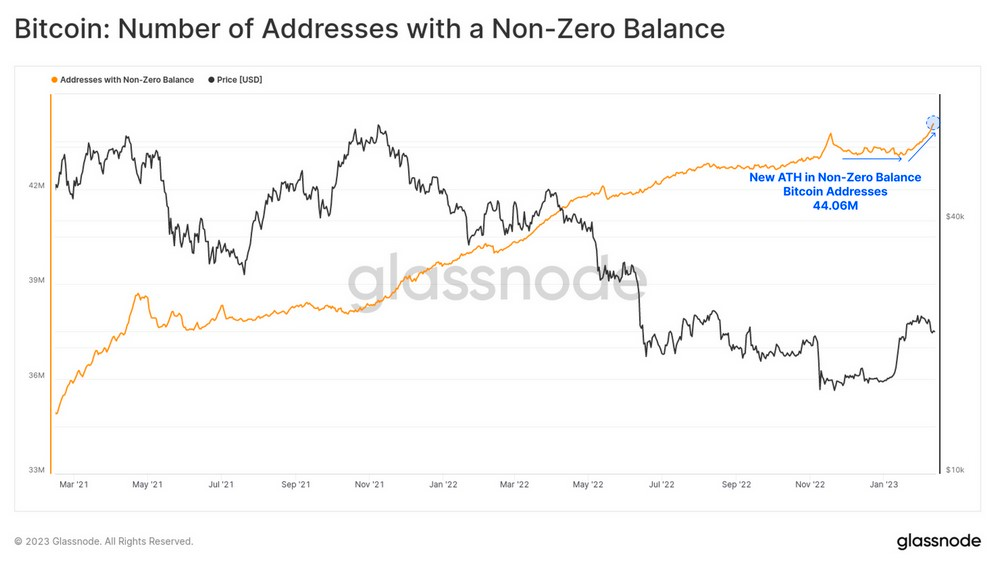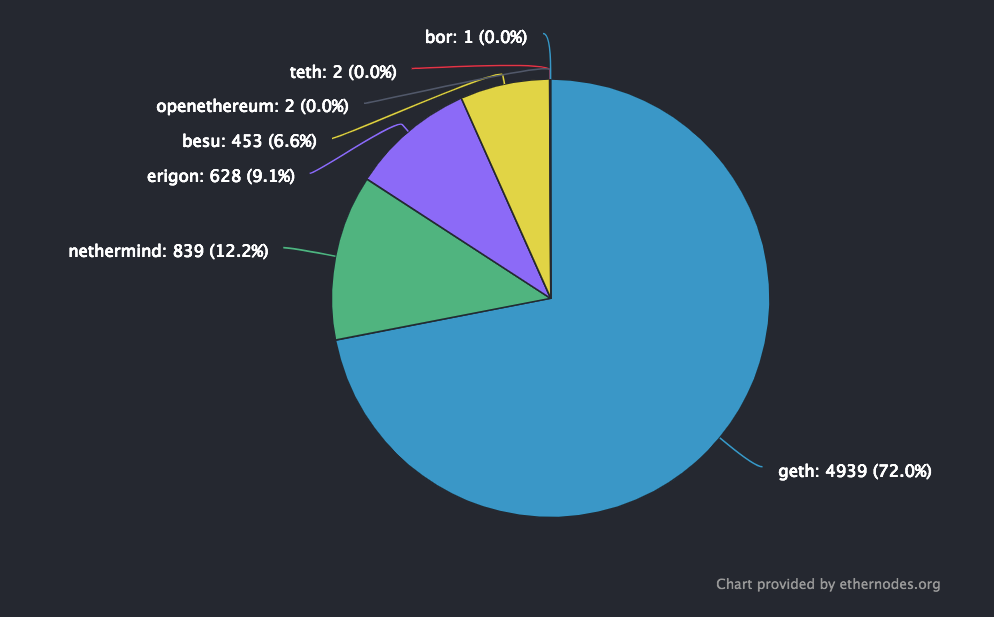To effectively address the scalability challenge, it is crucial that both L1 and L2 solutions work together.
As of February 2023, over 44.15 million unique addresses have a non-zero balance of Bitcoin. While this may seem impressive, let’s face it — blockchain technology has come a long way since Bitcoin’s inception in 2009.

However, as the technology continues to evolve and gain mainstream adoption, scalability remains one of the biggest challenges facing the industry. Bitcoin and Ethereum, two of the largest blockchain networks, are highly decentralized, with thousands of nodes operating on each network (17,553 nodes for Bitcoin and 7,099 nodes for Ethereum as of April 14, 2023).

While this decentralization provides greater security, it also results in slower transaction speeds and scalability issues due to the significant computational resources required to maintain the continuously growing sum of nodes.
Hence, the blockchain trilemma, coined by Vitalik Buterin, suggests that blockchains can only have two out of three properties: scalability, security and decentralization. As a result, this fundamental trade-off represents a significant barrier to the widespread adoption of blockchain technology.
There are two primary strategies that have been introduced to tackle the scalability challenge: layer-1 (L1) and layer-2 (L2) solutions. While L1 solutions seek to optimize the base layer of a blockchain, L2 solutions provide an additional layer on top of the base layer to facilitate faster and more affordable transactions. Needless to say, this has sparked an ongoing battle between the two approaches as each demonstrates unique strengths and weaknesses.
Layer-1 blockchains
Layer-1 blockchains, such as Bitcoin and Ethereum, are designed to optimize the foundational layer of a blockchain protocol to increase transaction throughput and reduce fees. Their maximum capacity is often limited by network congestion and other factors, so L1 scaling solutions directly extend the blockchain protocol to improve scalability.
A prominent example of this is the introduction of Ethereum 2.0 and the subsequent development of (dank) sharding. Sharding aims to increase Ethereum’s transaction processing speed and reduce fees by splitting the network into smaller, more manageable shards. Each shard can then process transactions in parallel, significantly increasing the network’s overall speed.
Layer-2 blockchains
Layer-2 blockchains, on the other hand, refer to a network or technology that operates on top of an underlying blockchain protocol with the aim to improve scalability too. The idea behind L2s is to shift transactions from the base layer blockchain to an adjacent system architecture that is able to process the majority of the data and then report back to the base blockchain to finalize the result.
For instance, Ethereum is a layer-1 network, and a number of layer-2 solutions have been built to improve transaction speeds on the Ethereum network, including Polygon, Optimism (OP) and Arbitrum (ARB).
The battle
Undoubtedly, the scalability battle has come to the forefront with recent developments in L1 and L2 blockchains. While this may be the case, understanding the differences between L1 and L2 blockchain networks is crucial to gain insight and distinguish the primary differences between both layers.
Architecture
Layer-1 blockchains and layer-2 scaling solutions differ not only in their purpose but also in their fundamental design and architecture. L1 blockchains are designed to be self-sufficient, meaning that all the necessary layers for data availability, consensus, and execution are integrated into a single system. This design is intended to provide the security, decentralization, and immutability, that are the hallmarks of blockchain technology.
In contrast, layer-2 scaling solutions are designed to enhance the performance of L1 blockchains rather than operate as independent blockchains. Layer-2 scaling solutions use off-chain techniques such as state channels, nested blockchains, rollups and sidechains to process transactions faster and more efficiently. In this way, layer-2 scaling solutions can increase the transaction throughput of L1 blockchains without compromising their security and decentralization.
Scalability method
Another significant difference between L1 and L2 scaling solutions lies in their scalability methods. L1 blockchains depend on various techniques such as consensus mechanism changes, chain forking and sharding to boost their transaction throughput. While these methods can improve transaction speeds, they can also lead to network congestion, security risks and fragmentation. L2 scaling solutions, on the other hand, process transactions off-chain, allowing for increased speed and efficiency while still relying on the primary network for security and decentralization. This approach reduces the risk of network congestion, minimizes fragmentation and enhances the overall performance of the blockchain ecosystem.
Nakamoto coefficient — the main measure of decentralization
The Nakamoto coefficient is an important metric to consider when evaluating the level of decentralization in a blockchain network. It is crucial to consider the trade-off between scalability and decentralization when measuring up the difference between L1 and L2 solutions.
Often, L1 solutions such as Near protocol or Solana have a higher coefficient because they offer a high degree of decentralization due to their reliance on a large number of validators. On the other hand, L2 solutions such as Opside or zkSync could offer improved scalability through the use of off-chain processing, but in turn, would be less decentralized due to their reliance on a smaller set of validators.
The bottom line
The ongoing battle between L1 and L2 solutions has its fair share of pros and cons. While L1 blockchains offer superior security and decentralization, they suffer from scalability issues. In contrast, L2 solutions offer scalability and lower fees, but may come at the cost of compromising the security and decentralization of the underlying blockchain.
Evidently, L2 solutions are not a “one-size-fits-all” solution to the scalability challenge. They rely on the base layer’s security and decentralization, and if the base is compromised, it could affect the very foundation of the layer-2 solutions in question.
Needless to say, as blockchain technology continues to mature, the outcome of this showdown will likely determine the path forward for scaling the technology to meet the demands of real-world applications. In the meantime, it is vital for both L1 and L2 solutions to work together to effectively address the scalability challenge.
Source: https://cointelegraph.com/news/moving-beyond-the-blockchain-trilemma-l1-vs-l2



